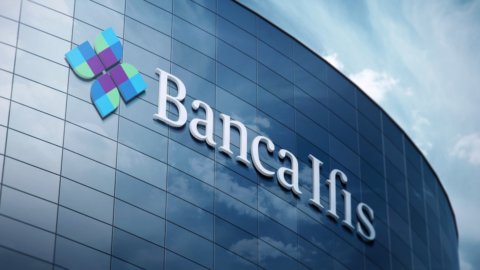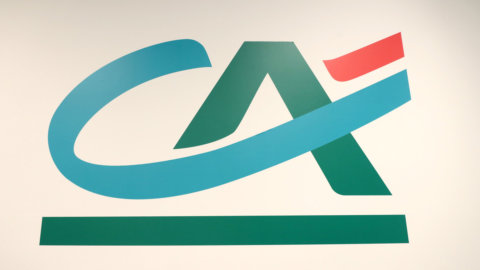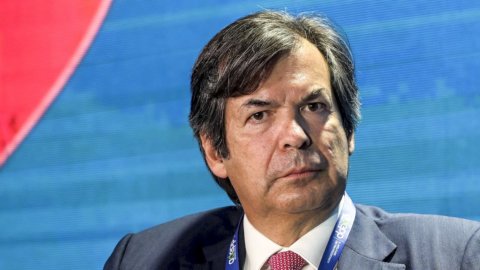In three-year period 2022-2024 are expected 82 billion euros of new non-performing credit flows, 10 billion more than expected last February due to the persistence of the criticality of the prices of energy, raw materials and foodstuffs, but also to the increase in interest rates established by the European Central Bank. This is what emerges from the 16th edition of Market Watch Npl of Banca Ifis, presented on 23 September during the works of “Future Proof”, the 11th edition of the Npl Meeting organized by the institute, held today at Villa Erba, Cernobbio.
According to the report, the rate of deterioration of enterprises it will grow to a greater extent than that of households (in 2023, 4% vs 2,3%) due to the greater risk associated with ex-moratorium loans. Not only that, again in the three-year period 2022-2024 the increase in non-performing flows will be offset by the continuation of the de-risking process, also in line with the plans of the main banks, with an Npe ratio on the banking system of 3,3% at the end of 2024.
Npl and Utp: transactions expected in 2022
In the first 9 months of 2022 they were finalized disposals for 22 billion euro of Npe. In particular, transactions with GACS represented 48% of the volumes, absorbing 41% of the secured portfolios transacted. The unsecured component accounted for 48% of the total
For this year, Banca Ifis expects 35 billion Npl transactions, with the secondary market now an important component (30% of total volumes) which has developed over time reaching a total gross transacted of 48 billion euros in the period 2015-2021 and in 2022 will contribute another 10 billion.
Also in 2022 they are estimated disposals of UtP portfolios for 12 billion euros, of which 6 have already been completed. Looking to the future, however, in the two-year period 2023-2024 significant volumes are expected for the NPL market (47 billion NPE sold in 2023 and 33 billion in 2024) following massive de-risking plans, especially by the most important banks. “The high incidence of GACS deals, fresher portfolios and investor appetite have led to a slight increase in 2022 average prices, particularly on unsecured loans. At the moment, the effect of inflation and rate increases is not observed on the 2022 deals” reads the report. .
Npe: the overall stock
Going forward with the data, lo stock of Npe in Italy it decreased from 361 billion euros in 2015 to 321 billion in 2021, thanks to the management carried out by banks and servicers. For 2022, an increase is estimated up to a total amount of 377 billion euros in 2024, due to the expected increase in non-performing flows and the reduction in recovery rates, especially on larger tickets and secured loans that require longer recovery times: 62 billion euros the expected volume on bank books and the rest handed over to investors who continue to play an important role in the stability of the financial system.
The bad credit industry
"L 'credit industry deteriorated worked intensely for the stabilization of the financial system Italian”, underlines Banca Ifis which highlights how Italian banks have achieved an important de-risking result. The estimate is of 357 billion Npe portfolios sold from 2015 to 2022.
In detail, around 100 investors have worked, spending around 90 billion euros over 7 years to acquire portfolios of non-performing loans on the primary and secondary market.
The Npl industry has registered a continuous growth in turnover from 2013 to 2021: +90% (almost doubled) which according to estimates will continue with +9% in 2022 and +4% in 2023. Over the past decade, the sector has brought investments in human resources and technology, drivers of value creation confirmed by the growth of 'Ebitda (+20% annual average).
The main banks in the European comparison
THEEU Npe ratio fell to 1,9% in the first quarter of 2022, the lowest level since 2015. The incidence of stage 2 loans is increasing, as a reflection of a general forecast of worsening credit risk. At the end of the first quarter of 2022 the volume of banks' non-performing loans significant EU stands at 384 billion euros (16% the incidence of Italian banks), the lowest value since the peak in 2015 when the stock was almost 1.100 billion euros and Italy contributed 34%. The default rate at Q1'22 of Italian businesses and households is lower than the EU average. Among Italy's peer countries, only Spain records a significant deterioration.
THEdebt of Italian businesses and households compared to GDP and disposable income it is, respectively, 11% and 33% lower than the European average. Given the limited debt of households and businesses, in the first quarter of 2022 Italy shows an incidence of bank loans classified in stage 2 (13,1%) higher than the EU average (9,1%), showing a higher prospective risk .
The Gacs
According to Banca Ifis, the Gacs have concretely supported the de-risking of Italian banks and the development of the Npl market with €107 billion of disposals: 20 banking institutions involved; about 32% of total Npl transactions from 2016 to today.
Compared to the pre-Covid period, the monthly trend of collections from Gacs portfolios shows a lower average recovery dynamic. The first six months of 2022 have not shown an improvement.
Banca Ifis: interventions by Fürstenberg Fassio and Geertman
“Today, more than ever – he declared Ernesto Furstenberg Fassio, vice president of Bank Ifis – our Npl Meeting represents not only an essential opportunity for discussion between the main market operators, in the light of the new challenges facing the Italian and global economy, but also a precious resource for policymakers and stakeholders to understand the value of Npl industry. An industry that over the years – as our Market Watch demonstrates – has played a decisive role in the stability of the financial system and has confirmed itself as a resource for the country. But the management of non-performing credit is not just a question of business efficiency: the collective effort must go in the direction of sustainability, combining the industrial approach with that based on ethics, which favors the financial re-inclusion of families and businesses. We are convinced that this is the real key to success for our sector. Only in this way will we be able to overcome the difficult challenges that await us and truly be Future Proof”.
“The economic scenario we are facing has undergone profound changes due to the new shock caused by the Russian-Ukraine crisis, the effects of which will begin to be felt in the coming months. Market Watch data confirms this,” he commented Frederik Geertman, CEO Bank Ifis, according to which “The savings of households, the liquidity of businesses and the solidity and profitability of banks will help to mitigate the impact. The latter have in fact carried out an important de-risking work on their financial statements and are working towards a further improvement in the Npe ratios. This is possible thanks to the Italian NPL investment and servicing industry which has in fact proved to be particularly vital also in comparison with the European one, playing a crucial role for the stability of the system. Today we must look to the future with the ambition of carrying out our task in the best possible way in support of the real economy, continuing to make investments, protecting profitability and focusing on innovation, new technologies and people's training".





